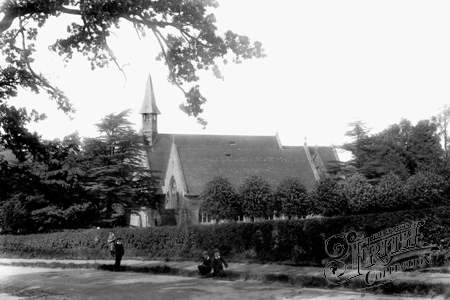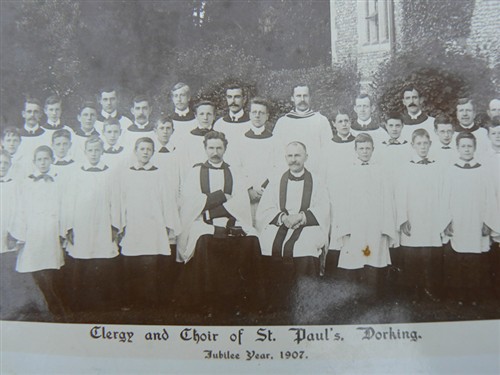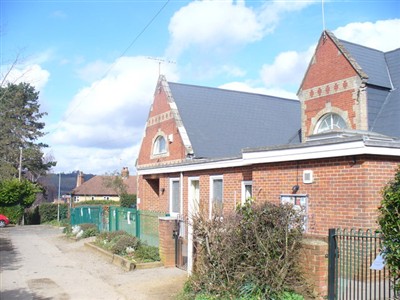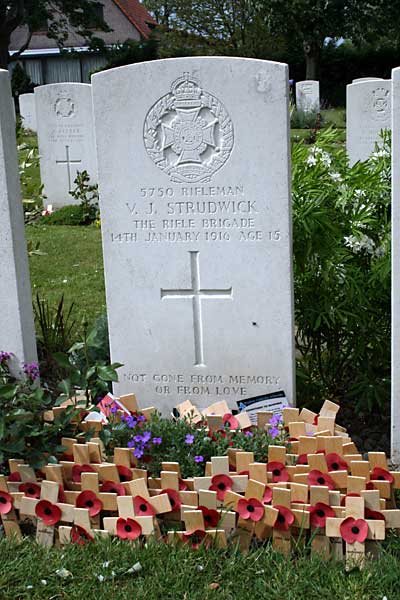History of St Paul's Church
The St Paul’s Church that you see today is the result of its growth and development from more humble beginnings.
St Paul’s Church was consecrated in 1857 – at this stage it consisted of just the central aisle of the current church building. The ground for the building of the church had been given by local landowner Henry Thomas Hope who at the time lived at The Deepdene, one of the great Dorking houses. (This area has since been developed and remembered by the various Deepdene named residential roads and Kuoni House)
The finance for the building was gifted by John Labouchere who lived in Broome Hall, Coldharbour. He also financed the building of Coldharbour Church. It would appear both men were known to each other via financial business links as both families were in Banking, originally in Holland.
John Labouchere was involved – and Treasurer of – the organisation London Society for Promoting Christianity amongst the Jews. This was an evangelical movement mainly amongst the middle and upper classes of society which concentrated on helping poverty stricken inhabitants of London by feeding, clothing and giving training and employment alongside spreading the Gospel.
Right from its beginnings, St Paul’s Church was to be an evangelical church.
The Church was designed by the Victorian architect Benjamin Ferry and built in Bath stone and flint in the style of Early Decorated or Geometrical. At the time of construction there was a central aisle with the east and west windows containing painted glass. The church was entered via a porched entrance on the south side of the building and there was a balcony high against the west wall.


The first Vicar in 1857 was the Reverend J.B. Calvert. The first Church Wardens are commemorated within the church building – to be mentioned later in the “walk around the church”.
As the congregation increased financial subscription allowed the north aisle to be added in 1860 and the south aisle in 1869.
The Social Setting of St Paul’s
Dorking in 1851 had a population of 3,490, and then the railway came to town. This brought easy access to London and the start of the pioneering commuters. As a result the town’s population greatly increased – in 1871 it rose to 5419, in 1891 was 7132 and in 1901 was 7670.
To provide for the new arrivals there was a new wave of housing development. To start there was the Rose Hill development (1838-60) by the Dorking Villa Company providing housing for the more wealthy classes. To provide more modest housing Tower Hill, South Terrace, Harrow Roads East and West, Falkland, Hampstead and Horsham Roads were built 1852-70. In the 1880’s Cliftonville, Knoll and Ridgeway Roads were built.
St Paul’s Church was found central to all these developments and all the above roads are now found within the Parish boundary.
The new church was built in 1857 amongst pastoral land, just about visible from the High Street, on a new road to become St Paul’s Road West. This new road continued on to become St Paul’s Road East to join Stonebridge Lane (later Chart Lane) and onto the Deepdene Estate.
St Paul’s Church has always been a focus to its community, giving practical assistance and education in addition to spiritual care. In 1889 St Paul’s Church Room was completed in Falkland Road. As mentioned in the Parish Magazines of 1880’s St Paul’s had other various church workers and buildings – a mission room at 16 Falkland Road serving as a soup kitchen in winter providing accommodation for a Bible Woman and offering nursing care. Help was also available to needy in the form of a coal fund, clothing club, blankets for loan and St Paul’s Parish Lending Library.
A Mens’ Club opened in 1905 at 17c Horsham Road offering a place for men to go (other than one of the many drinking establishments) for “healthy recreation and amusement”. On offer was “an excellent bath, comfortable Reading Room, good billiard table, bagatelle table and shooting gallery and a variety of other games”.
The Church Army Worker maintained strong links with St Paul’s and meeting held in a tent “in the field behind South Street”. The founder of the Church Army Prebendary Carlisle lived nearby in Glenwood at this time and held strong links with St Paul’s.
St Paul's School

Shortly after St Paul’s Church was consecrated, a request was made by the minister and church wardens to Henry Thomas Hope for land to build a school. On 16 May 1859 “the land lying and being part of the Glory” was given and the school was built at the cost of £2,126 and opened in 1860. It can be found by continuing up St Paul’s Road West. St Paul’s School was to be “for the education of children and adults or children only of the labouring, manufacturing and other poorer classes in the ecclesiastical district”.The school was subsequently enlarged in 1871 with the provision of a nursery school, 1912 and again in 1921 and became a church aided school in 1951.
Additionally Mary Labouchere funded the provision of an Infant School in Falkland Road (date of establishment unclear but prior to 1878). This was known as the Labouchere School and this continued until 1956 when the building was sold.
St Paul’s Church Parish Magazine
In years gone by a magazine was published for the parish. Here is a copy of the St Paul's Church Parish Magazine from October 1959.
A ‘Walk around St Paul’s’
St Paul’s Church has eight stained glass windows, three of which are prominent as you enter the church.
The Nativity Window is at the east end of the chancel and shows the traditional nativity scene and two angels holding scrolls reading “Gentiles shall come to the light, and Kings to the brightness of thy reading”
The St Paul’s Window in the north aisle commemorates Richard Attlee, one of St Paul’s first church wardens. The window was added in 1909 by Richard Attlee’s son. Richard Attlee lived in Holly House in Rose Hill, was a corn merchant and miller in the town and grandfather to Clement Attlee who became Prime Minister (1945-51).
The Resurrection or Ascension Window in the south aisle is a memorial to Henry Thomas Hope, who gave the ground from his estate on which to build St Paul’s Church in 1857. The window depicts several scenes of the resurrection.
The Rose Window is in the west end above the entrance doors dedicated to Henry Hutton, formerly head master of St Paul’s School 1892-24 and ordained 1932 serving at St Paul’s until his death in 1942. Around the window are the words of 1 Corinthians 3:16 ‘Know ye not that we are the temple of God, and that the spirit of God dwelleth in you.’
There is a decorative panel in the north aisle window in memory to Emily Mary Anne Cobbett, who died in October 1860.
As you enter the chancel there are a pair of stained glass windows on either side of the altar. These are commemorating the Stilwell family who were benefactors to this church (and St. Martin’s Church) and who lived at Starhurst (later to become Starhurst School) in Chart Lane.
Also in the chancel on the east wall is a large marble memorial to Colonel Atchison. He was also one of the first church wardens, and lived at number 10 Rose Hill. There are several brass plaques in memorium to various members of his family, including George Atchison, who died as an army captain during the North China campaign of 1860.
The Triptych is also found on the north wall of the chancel. It was one of three installations given to St Paul’s by Miss Flood in memory of her sister.
The other parts of the artworks was a Reredos showing the ascension of Christ surrounded by eight saints and designed for the east wall behind the altar (it is no longer in the possession of St Paul’s) and the War Memorial. The artist was SI Hitchens.
The altar shows the text “Til He Come” this is also the text shown on the tomb of John Labouchere who endowed St Paul’s Church. Today the altar backcloth is a beautiful collage designed and contributed to by members of the congregation and installed on the reordering the Church in 2004.
The decorative chancel stalls were given in 1866 by the Misses Flood, together with the pulpit.
The organ was provided by the congregation by subscription in 1886 and improved and overhauled several times over the intervening years.

Moving back into the body of the church, in the south aisle is the War Memorial showing the names of the parishioners who were lost in the two world Wars. It includes the name of Valentine (or Joe) Strudwick who fought in the First World War. He had been a pupil at St Paul’s School and joined up at the age of 14 years and 11 months. Sadly he was killed in Belgium aged only 15 years and became one of the youngest soldiers to die in the War.
Looking at the exterior of the Church, the current porch was added in 1931 and the Church Room built in 1975 following the sale of the Falkland Road Church Hall.
At the rear of the Church is the font given by Lily Duchess of Marlborough who at the time lived at Deepdene and was a benefactor to this and St Martin’s Church. It was given in 1903 when the whole church was restored in oak at the cost of £2000. Electric lighting and heating was also installed.
One hundred years later in 2004 the Church was reordered. The pews were removed allowing for a more adaptable and usable space, new flooring, lighting, heating, sound and multimedia facilities were installed.

During 2007 the Church celebrated its 150th anniversary with special events and a celebration service with the Bishop of Dorking in attendance.

We are currently in need and anticipating the provision of a
new Church Centre to allow for more appropriate facilities for the current congregation and the needs of the next generation.
Ministers of St Paul's Church
J.B. Calvert
S. Holmes
H .Sturdy
C.A. Keightley
W.H. Hewett
Loton Parry
A.C. Nickol
R.C. Sinker
T. Burden
Roger Salisbury
Andrew Cullis
Paul Bryer
Ruth Bushyager |
|
1857-66
1866-81
1881-1901
1901-02
1902-19
1919-21
1922-50 (curate 1908-13)
1950-62
1963-73
1973-82
1982-2000
2001-2014
2014 onwards
|